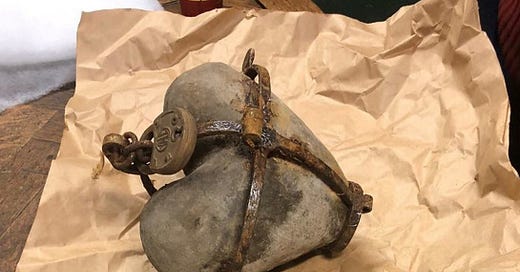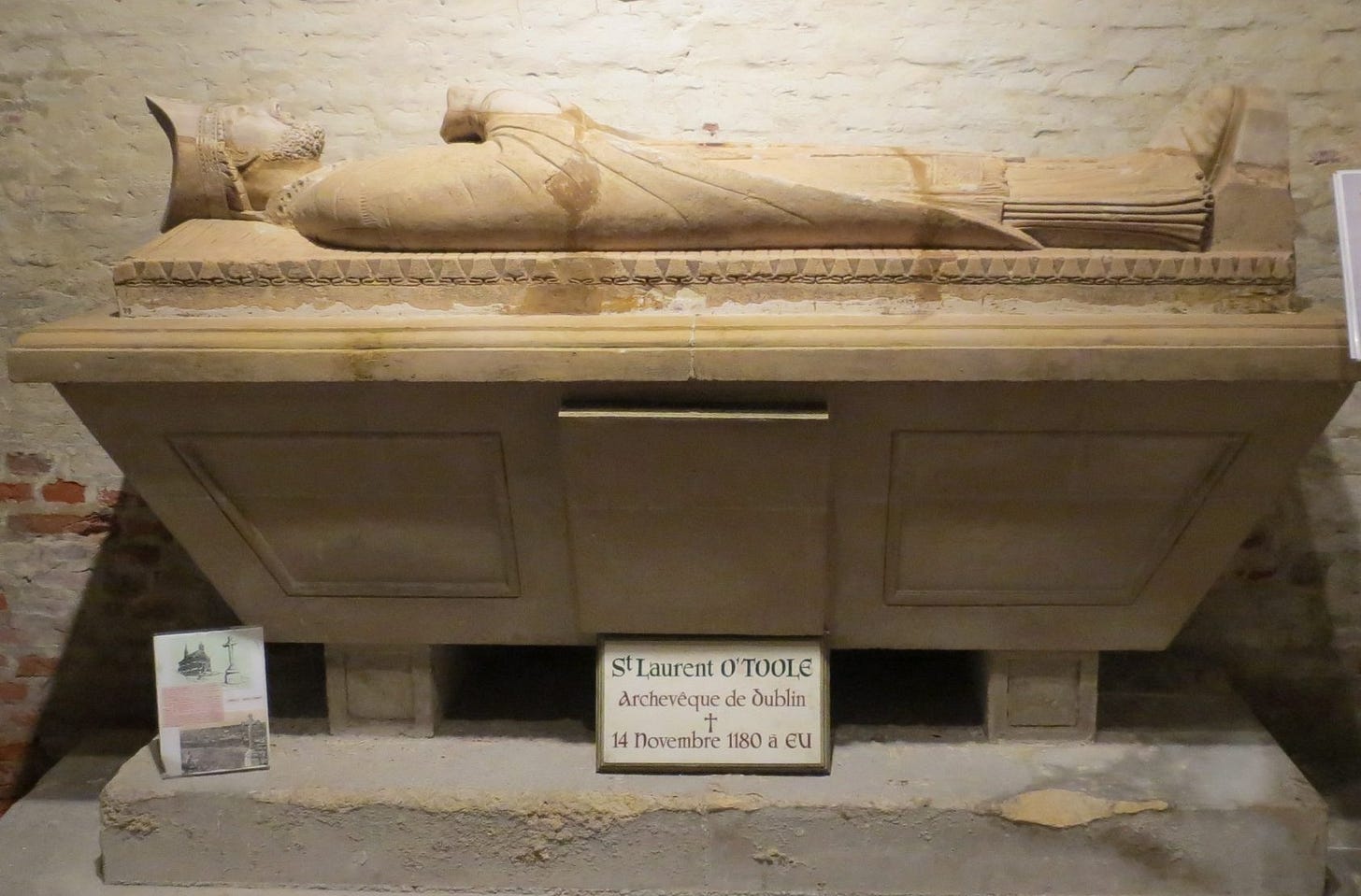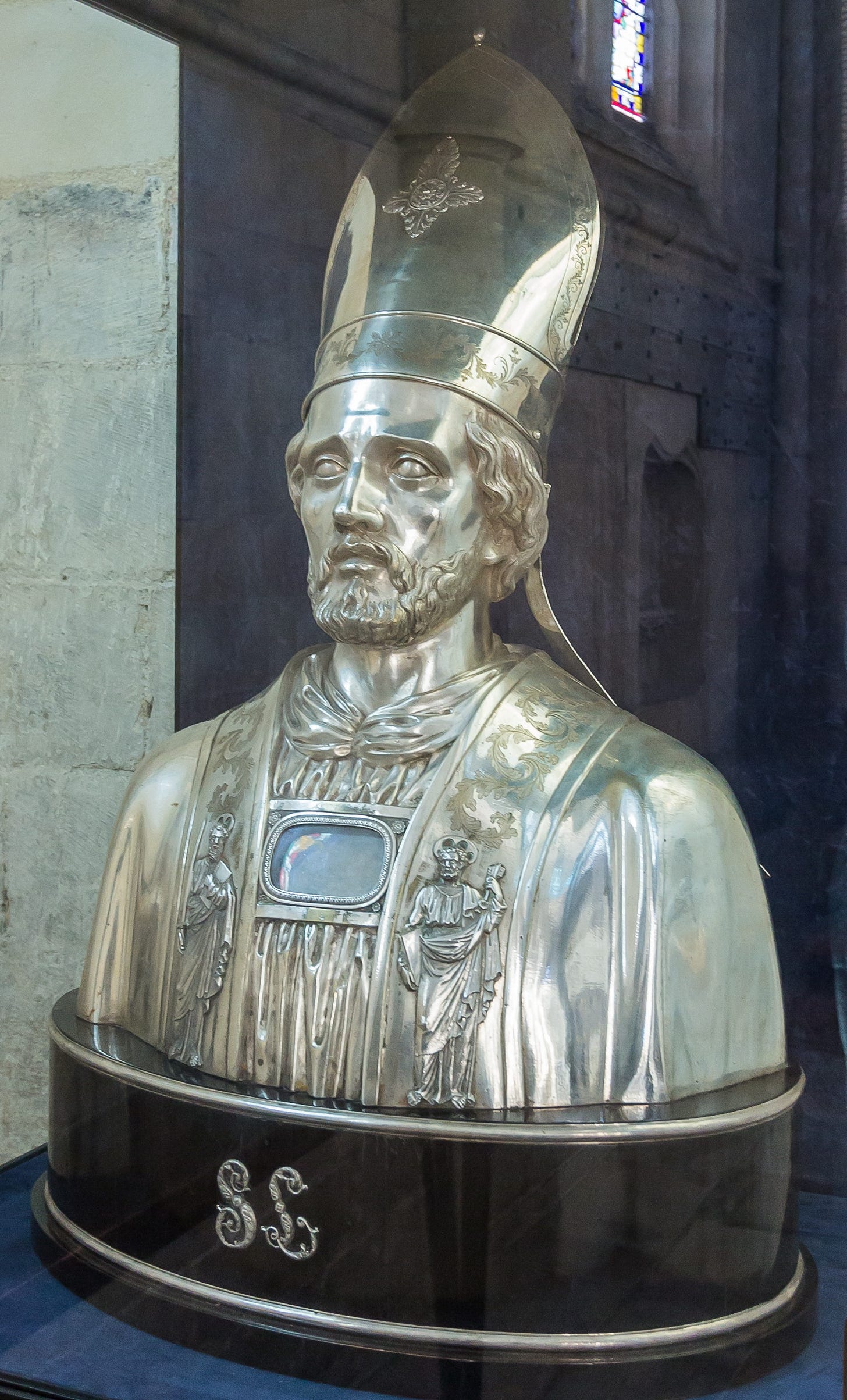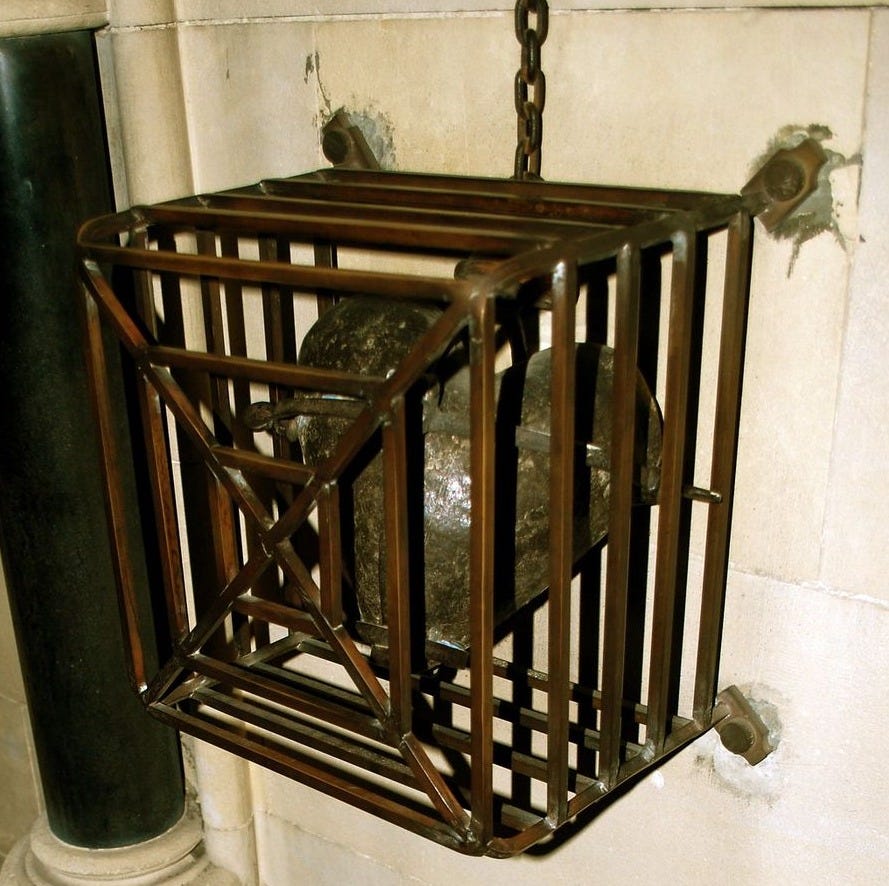The strange case of the stolen heart
The life of the great irish saint Laurence of O'Toole has a weird footnote. BONUS! Tom and Jerry: Mummified
In 2012, someone prised open the iron bars of a small cage holding a reliquary containing the heart of Bishop St. Laurence O’Toole (or “Lorcán Ua Tuathail” in the incomprehensible spelling of my people) and stole away with it. Then it just appeared again.
It was just the latest in the eventful life of a forgotten saint.
The Life of Lorcan
Laurence was the son of Muircheartach Ua Tuathail, described in chronicles as the king of Leinster. His brother was Giolla Comhghaill, who succeeded his father, while his sister Mor was married to Diarmuid na nGall, also a king of Leinster.
His grandfather had been murdered by a rival family and Laurence himself was raised as a royal hostage, where he was abused prior to being sent off to the monastery at Glendalough around 1140, rising to become its abbott by 1153 at age 25. Due to the miracles of St. Caoimhghin (Kevin)1—including driving demons from the area and various healings–Glendalough was one of the four major pilgrimage sites of Ireland, so the position was a great honor.
Laurence converted the abbey to the Augustinian rule, and was then sent to Dublin as its archbishop, with Christ Church as his cathedral. He began a successful reform movement, and did a great deal to help the hungry and suffering people of the city. Each Lent he would return to Glendalough and spend the entire penitential season in a cave.
Beginning in the 1160s, the conquest of Ireland by England led to even more suffering. After being deposed as king of Leinster, Laurence’s brother-in-law Diarmuid invited Anglo-Norman forces to help him regain power. As his forces approached Dublin, the people begged Laurence to negotiate with Diarmuid. While the bishop was in their camp, however, the enemy captured the city and began a slaughter of the population.
Laurence returned and was able to stem the spiraling violence, but the die was cast. Henry II wanted Ireland, and the Anglo-Norman clergy wanted to bring some order to the Irish Church in order to implement the Gregorian Reforms. Eight-hundred years of English oppression of the Irish had begun in earnest.
For the remaining eleven years of his life, Lawrence spent his time in diplomacy, traveling to England and Normandy to persuade Henry II to go easy on Ireland. He went to Rome for the Third Lateran Council, where he was made a papal legate by Alexander III.
Henry wasn’t interested in dealing with that level of authority, so he avoided meeting with Laurence, who followed him to Normandy. Henry even had the channel ports closed to the bishop in order to keep him out. Laurence eventually landed at Eu, in Normandy, where he died at the age of 52. Some annals incorrectly list him as a martyr, but his death was natural.
The Peripatetic Remains of Laurence
A story is told that Laurence was attacked before the altar of Canterbury Cathedral while there to negotiate a treaty with Henry II. Thomas a Becket had been murdered in the same location five years earlier, and there were fears that Laurence was becoming another Thomas. A madman thought he was making a saint by bashing him over the head the club. Laurence called for water, blessed it, applied it the wound, and was healed. In 1876, evidence of the injury was noted by the Cardinal Archbishop of Rouen when he examined the skull of Laurence, kept in a reliquary.
He was buried in Eu, and miracles soon followed at the site, so a new church was raised in his honor: Collégiale Notre-Dame-et-Saint-Laurent d’Eu. When Honorius III canonized him in 1224, his remains were translated in front of the main altar. A magnificent recumbent tomb figure survives, but the remains were eventually stolen. Some wound up in the church of St. Laurence in Chorley, Lancashire, and disappeared during the Reformation. (They may be buried at the church.)
His skull also went to England, but found its way back to Normandy in a magnificent reliquary.
A reliquary was also created for his heart. It was returned to Christ Church, where it was displayed in an iron cage bolted to the wall.
The church itself was eventually stolen during the Reformation, and remains in the hands of the protestant Church of Ireland.
Bring Me the Heart of St. Laurence
The heart wasn’t quite done with its travels, however. In 2012, in a case that’s still baffling, someone remained hidden in Christ Church Cathedral after it was locked for the night. The person lit two candle at the altar of the Trinity, walked past numerous golden objects, and went to the cage containing the heart. Using some kind of pry bar or cutters, he opened the cage and made away with the reliquary.
At the time, there was a trend for stealing Irish relics. A month earlier, a reliquary for the skull of St. Brigid was stolen from a church north of Dublin, although the skull was not inside at the time. A few months before that, a reliquary for the True Cross was stolen, and later returned.
The case of the missing heart went cold for six years. Then, in 2018, someone called the police with a tip: something they were looking for world be found in Phoenix Park. A search turned up the Laurence reliquary, wrapped in plastic but undamaged. No arrest was ever made.
The heart was returned to the church. Now maybe the rest of building can be returned to the Catholic Church.

This week at An Owl Among the Ruins
Contemplating death, and some notes on Pope Leo.
At this point, I plan to stop typing out Gaelic names











I visited the heart of St. Laurence and the beautiful place where he had been abbot, St. Kevin's in Glendalough Co. Wicklow ! May he pray for Ireland